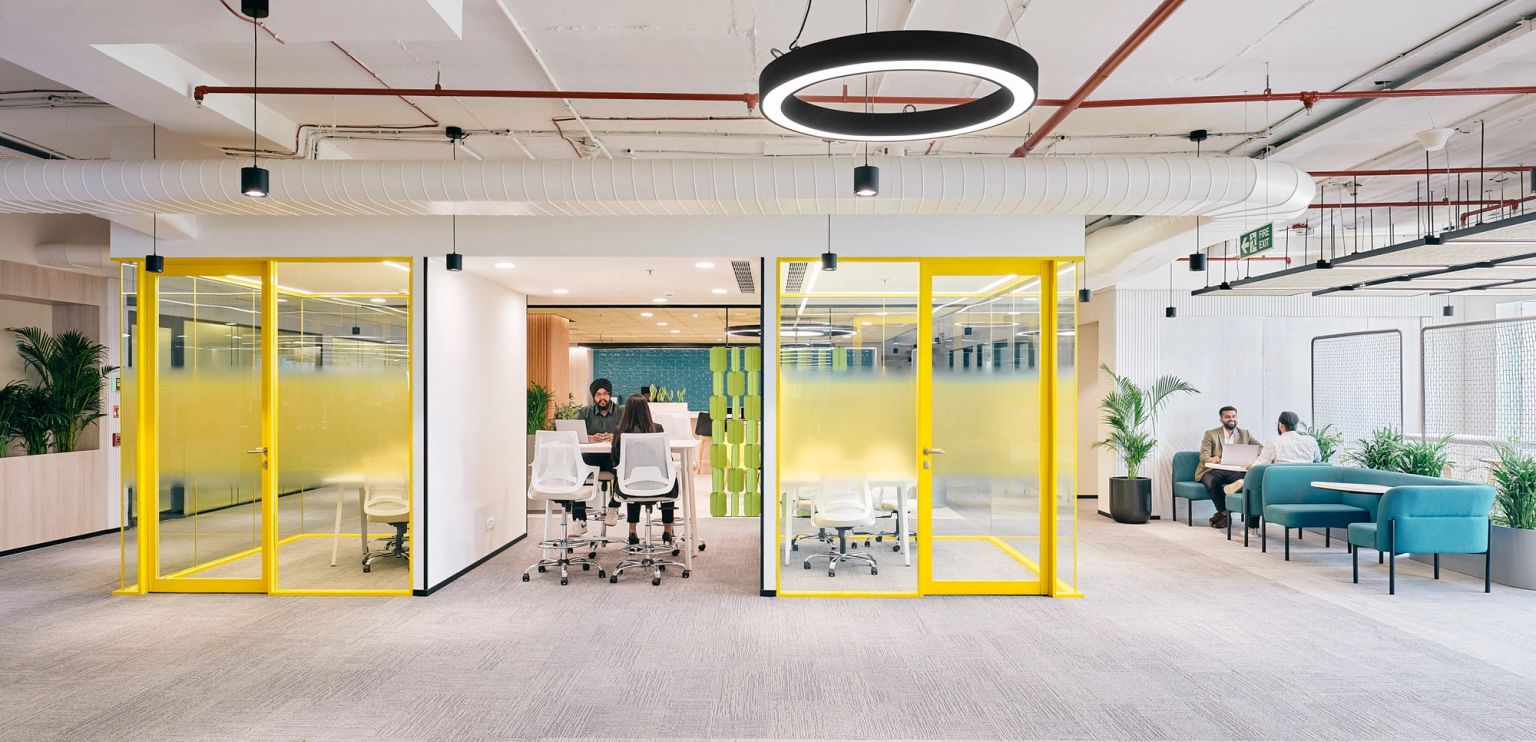RESOURCES
Sustainable Practices in Shared Workspaces

Explore sustainable practices in shared workspaces. Learn how coworking spaces conserve energy, reduce waste, and create eco-friendly office environments.
Knowing how our decisions impact the environment is crucial, particularly with climate change being a huge issue. Many people are now opting for an eco-friendly lifestyle and are also paying attention to how companies affect nature. Shared workspaces are also included in this transformation. But first, let's understand the concept of a sustainable workspace.
What is a sustainable coworking space?
A sustainable workspace is an office that people share in a way that is kind to the planet. It conserves energy, uses less plastic and has air-cleaning plants. Such workplaces recycle, consume less paper, and have work areas with ample sunlight. All this makes work nicer for the employees as well as the earth.
What are the benefits of a sustainable coworking space?
Sustainable workspaces benefit both humans and the environment. They purify the air, conserve electricity, and ensure peaceful work. Individuals are joyful and innovative in green workspaces. They also enable companies to go green and meet like-minded individuals who share their passion for the planet.
Also read: Why planning your office space is a necessity?
What are some sustainable practices to make a green shared workspace?
Here are some things to consider when making your workspace more sustainable.

Lowering energy consumption
Lowering energy consumption is one of the most effective measures to make a workplace sustainable. Green workspaces like WeWork use LED bulbs instead of ordinary bulbs. This can not only prove to be cheap but also last for a longer duration and consume less energy. Another sustainable practice is to use motion detector lights that automatically switch off when the room is vacant. Shared workspaces at WeWork also save power and maintain pleasant temperatures with the aid of smart thermostats.
Utilising renewable energy sources
Utilising renewable energy is one of the best practices in shared sustainable workplaces. Electricity is generated through solar panels in some coworking offices. Through the use of renewable energy, the carbon footprint of the workplace is minimised and dependence on fossil fuels is reduced.
Adding a touch of greenery to the office space
Plants improve the air quality and make a shared office a more comfortable place. Green walls, covered in plants, are another feature that is incorporated by some shared workspaces to provide a calmer and more natural space.
Selecting eco-friendly office supplies
Waste and pollution are added to by numerous office supplies. To manage this, collaborative workplaces like WeWork often select suppliers who provide eco-friendly products. Moreover, many offices opt for biodegradable cleaning materials over toxic ones to promote environmental sustainability in the workplace.
Conclusion
As sustainable practices benefit the environment and boost productivity, it is vital to incorporate green practices in shared workspaces. By conserving electricity, recycling, using renewable energy, and green transport, coworking spaces can be made more environmentally friendly.
WeWork is a great example of a sustainable coworking space offering the best amenities while following green practices. By using WeWork’s shared office spaces, businesses and individuals can contribute to a greener future.
FAQs about sustainable practices in shared workspaces
1. Why is sustainability crucial in shared workspaces?
Sustainability decreases carbon footprints, conserves resources, and provides a healthier work environment for employees.
2. In what ways can shared workspaces lower energy consumption?
They can install LED lights, motion detectors, and smart thermostats, and remind employees to switch off equipment when not in use.
3. What materials can be used in a sustainable workspace?
A sustainable workplace typically should employ green materials in its interior and furniture. Furthermore, biodegradable office supplies and toiletries are useful in building an environment-friendly workplace.
4. What is the role of plants in making an office sustainable?
Plants enhance air quality, remove carbon dioxide, and produce a healthier work environment.
Related Blogs:

RESOURCES
In this blog, we will explore innovative ways to utilise meeting rooms effectively, ensuring they become key assets in your business strategy.

RESOURCES
In the last few years, the world has evolved a lot, and so have we. Especially since the pandemic, video conferencing has made our lives easier. However, in-person team meetings and collaborations continue to remain significant.

